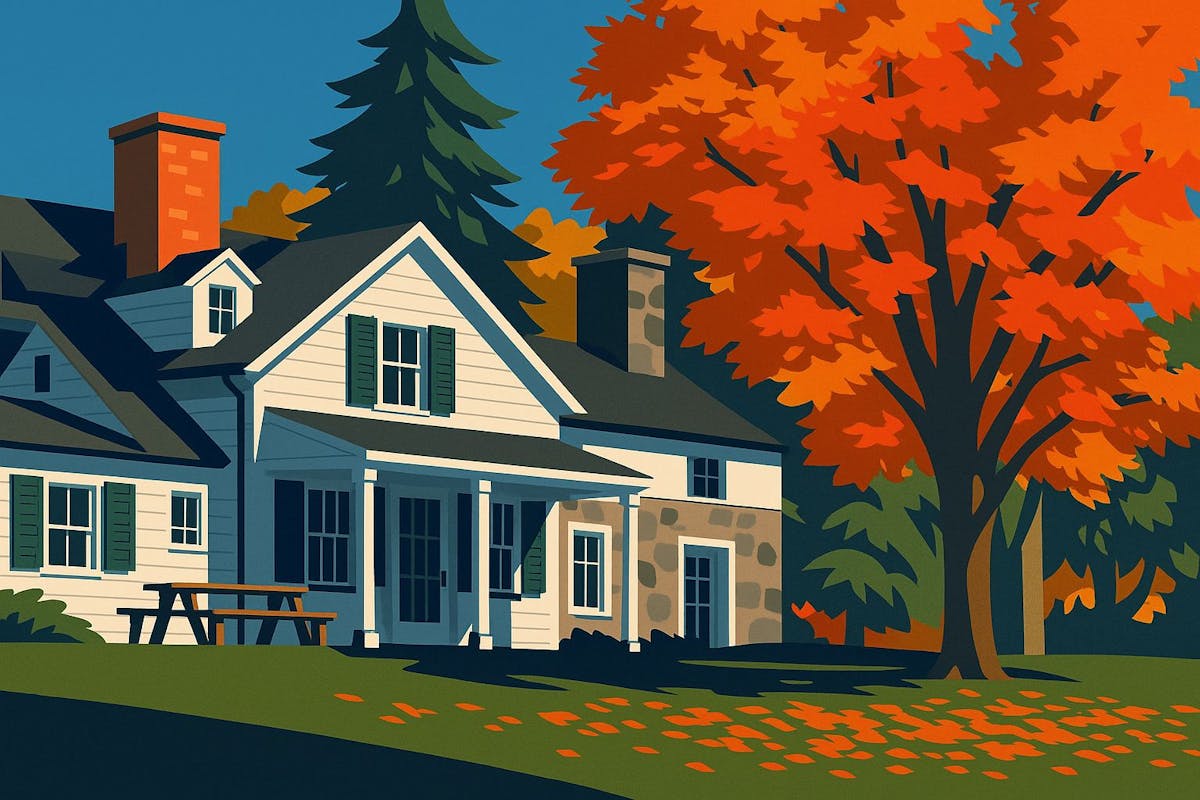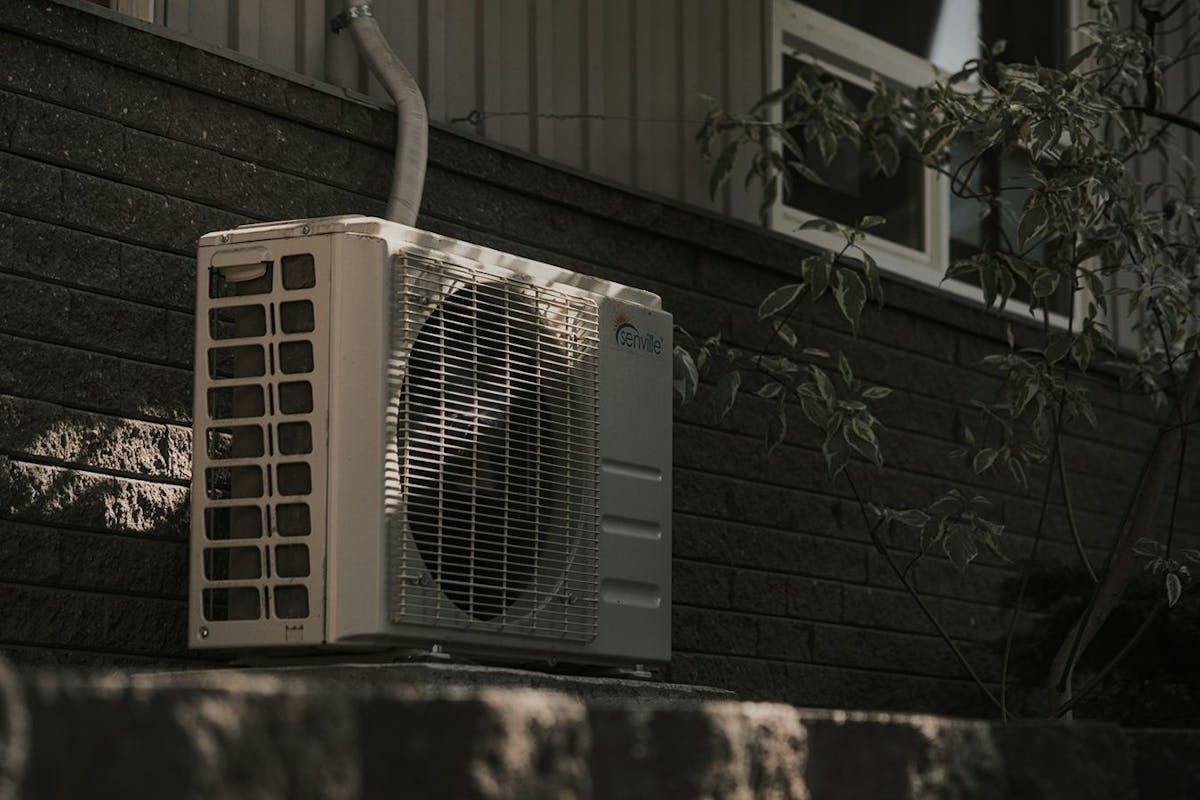Trees Can Leave You With a Smaller Energy Bill
Last edited

Author
Andrew Giermak
Solar and Electrification Writer and Editor

Editor
Andrew Blok
Electrification and Solar Writer and Editor

Of all the miraculous, amazing, life-giving ways trees make our environment better, add one more pro to the long list. Trees can reduce your home’s energy bills.
Think of it. When more of your home is in shade, it stays cooler and that means using less energy on cooling in the summer. In the cooler-to-cold months, trees can be windbreaks and let the sun’s heating energy through so you need less heating.
Planting more trees and shrubs is a great idea anyway, but how do trees lower energy bills? Here’s how you can do it on your property.
See how much you can save with home energy changes
Trees can keep your home cool in the summer
Planting trees is a natural and beautiful way to keep your home cool and lower your energy bills. By creating shade on or near your house, you reduce the strain on your air conditioner, which means it doesn't have to work as hard.
For maximum cooling benefits in the Northern Hemisphere, focus on planting on the south and west sides of your home. This is where trees can block the intense midday and afternoon sun. Deciduous trees are an excellent choice because their leaves provide dense shade in the summer and then fall off in the winter, allowing sunlight to help warm your home.
The US Department of Energy found a shaded area can be up to 25 ℉ cooler than unshaded areas, especially unshaded driveways, sidewalks, decks, or patios. Keeping areas near your home cooler reduces radiant heat from those areas later in the day and results in a cooler house overall.

Shading your exterior AC or heat pump unit is another useful tactic. If your AC unit is in direct sun all day, it’s working harder to cool the air it’s pulling in. You want trees close enough to provide shade, but not so close it disrupts airflow, makes maintenance difficult, or creates debris on or around a unit.
See how much you can save with home energy changes
Trees can lessen the heating load in the winter
Beyond summer shade, trees can also help keep your home warmer in the winter by acting as a windbreak.
Wind strips heat from your home's exterior and increases drafts, forcing your heating system to work harder. A well-placed windbreak slows down cold winds, which can reduce your heating costs by 10-25% according to the Texas A&M Forest Service.
While deciduous trees are beneficial, evergreen trees with their dense, year-round foliage provide the best wind protection. For most homes in the Northern Hemisphere, planting a windbreak on the north and west sides is most effective against prevailing winter winds.
In the winter, those deciduous trees that provided shade in the summer drop their leaves, letting the sun shine through onto your house, keeping it a little warmer.
More ways to save energy at home
More trees on your property is just one energy-saving tip you can try in or around your home. Downloading the new Palmetto app is another way. You can see your home’s energy consumption, connect your utility, and find tips and devices that could save you money.
Any way you can save on heating and cooling is a big one as the energy (and cost) used on heating and cooling adds up to 52% of the energy used by an average US home. Upgrading to a smart thermostat can be a year-around saver. Smart thermostats can use machine learning, artificial intelligence, voice commands, and app controls to adjust your temperature and run your heating and cooling in the most energy-efficient way.
In the summer, you can use the big heat-generating kitchen appliances (stove, oven, dishwasher) less often or at night. You can run your washing machine and dryer at night.
In the winter, you can use window coverings smartly, letting sun in during the day, then closing the coverings to keep heat in better in the evening and night.
More year-around ideas include checking your home’s insulation, upgrading the sealing around doors and windows, using ceiling fans, and staying on top of HVAC maintenance. Powering your home with solar panels can reduce your electric bill in all seasons.
To learn more about how new home energy solutions could save you money, you can use our free HVAC advisor or Savings Maximizer.
See what home electrification can do for you:
Frequently asked questions
Where should I plant trees to help with cooling?
For the best cooling effects during summer, trees that provide shade on the south and west sides of your home are best in the Northern Hemisphere. You can also plant trees to shade paved areas like driveways and decks which can radiate heat which your home envelope then absorbs forcing your HVAC to run more.
Where do I plant trees to help with heating?
The best trees for windbreaks in the winter are evergreen trees on the northern and western sides of a home. Trees should be planted at a distance of two to five times the mature height of the trees from the house.
What are other great reasons to plant trees on my property?
Along with the invaluable environmental reasons to plant more trees, more plant life and trees give homes and properties more habitat for your region’s natural wildlife, aesthetic improvement to your property, and be a natural filter for dust and odors.


